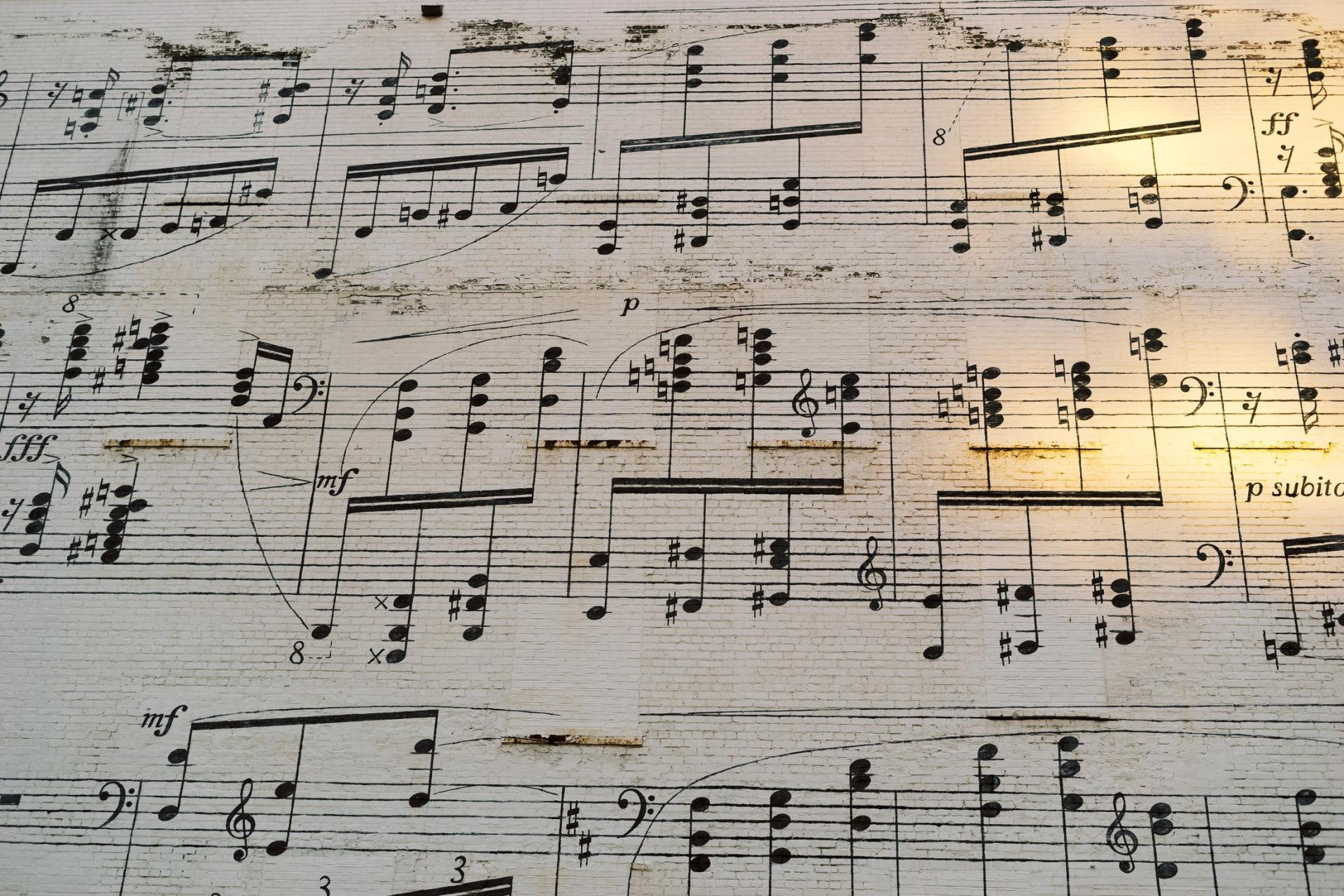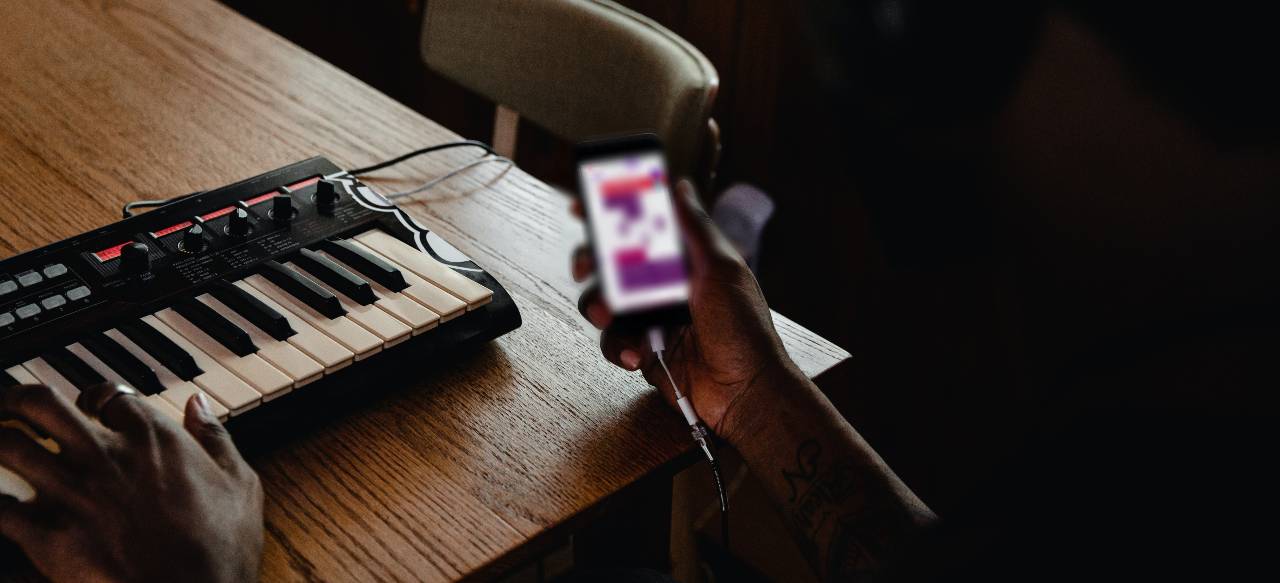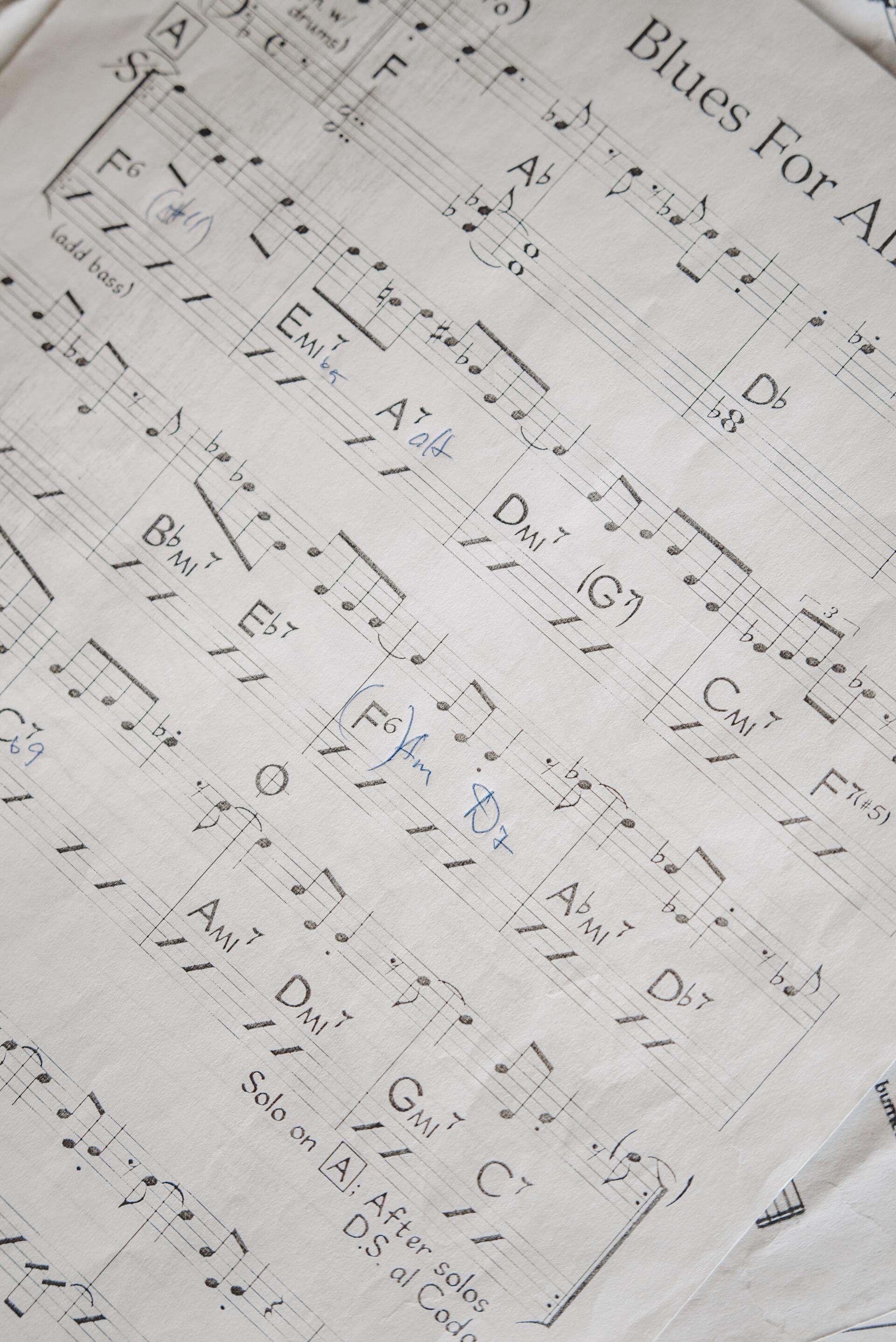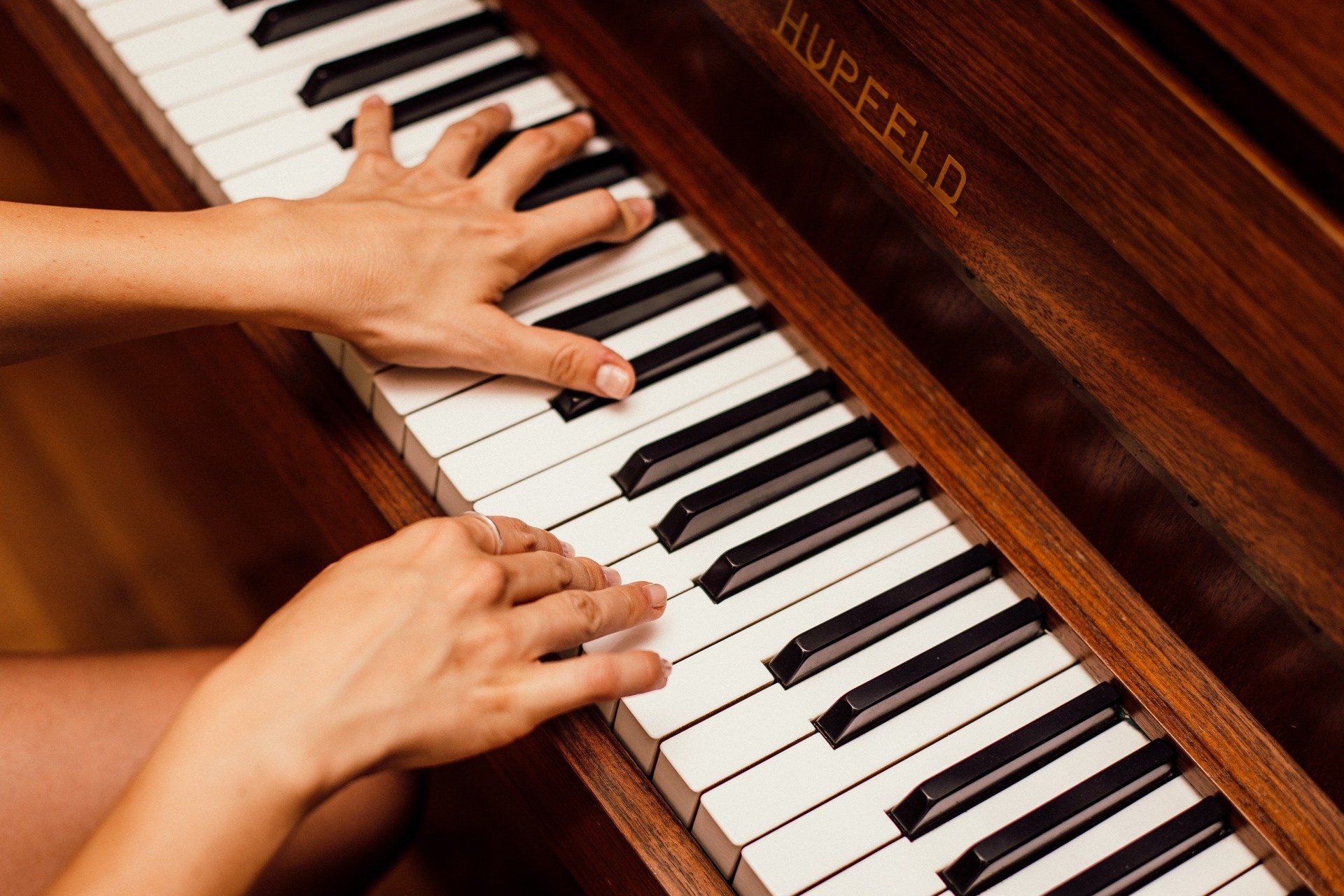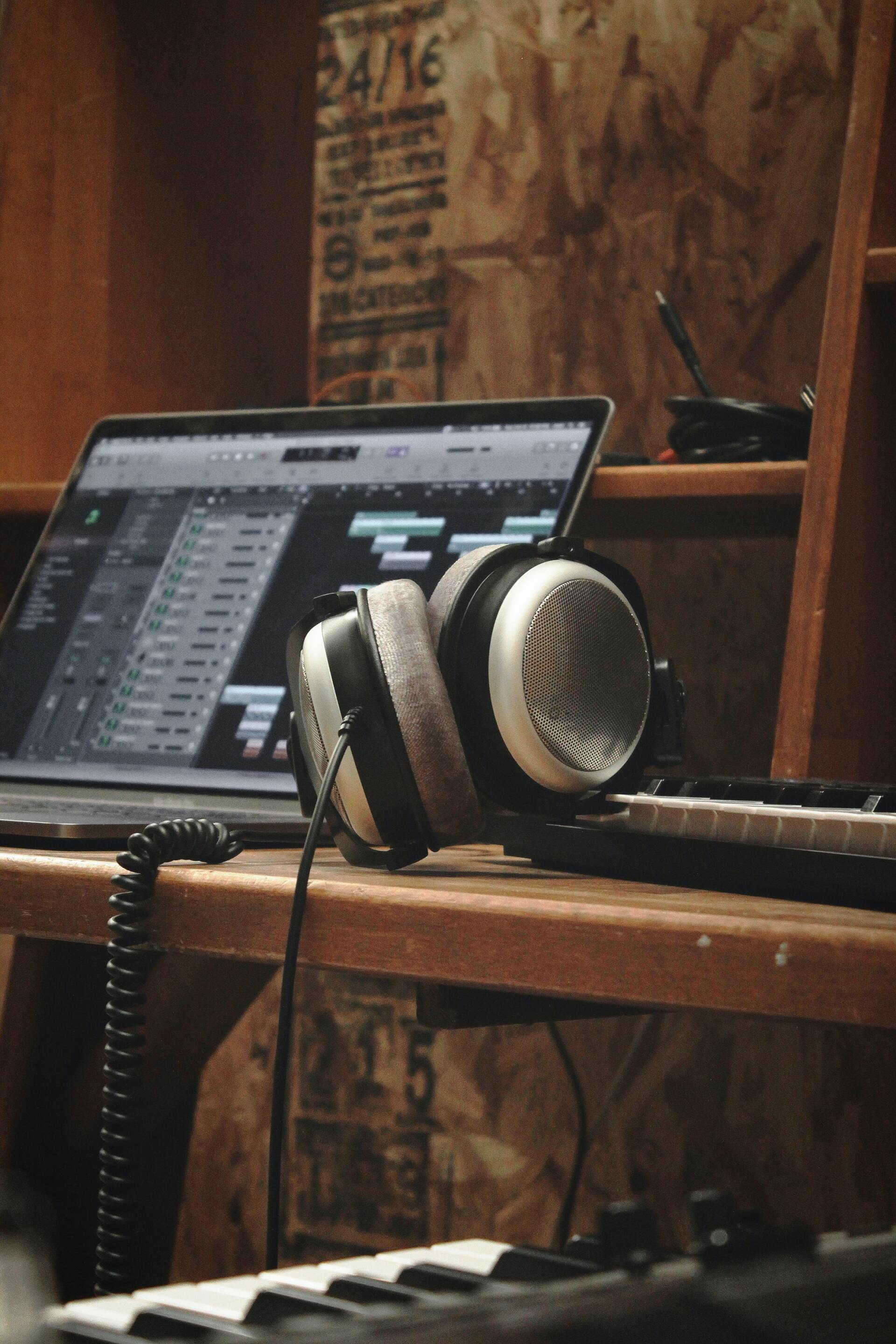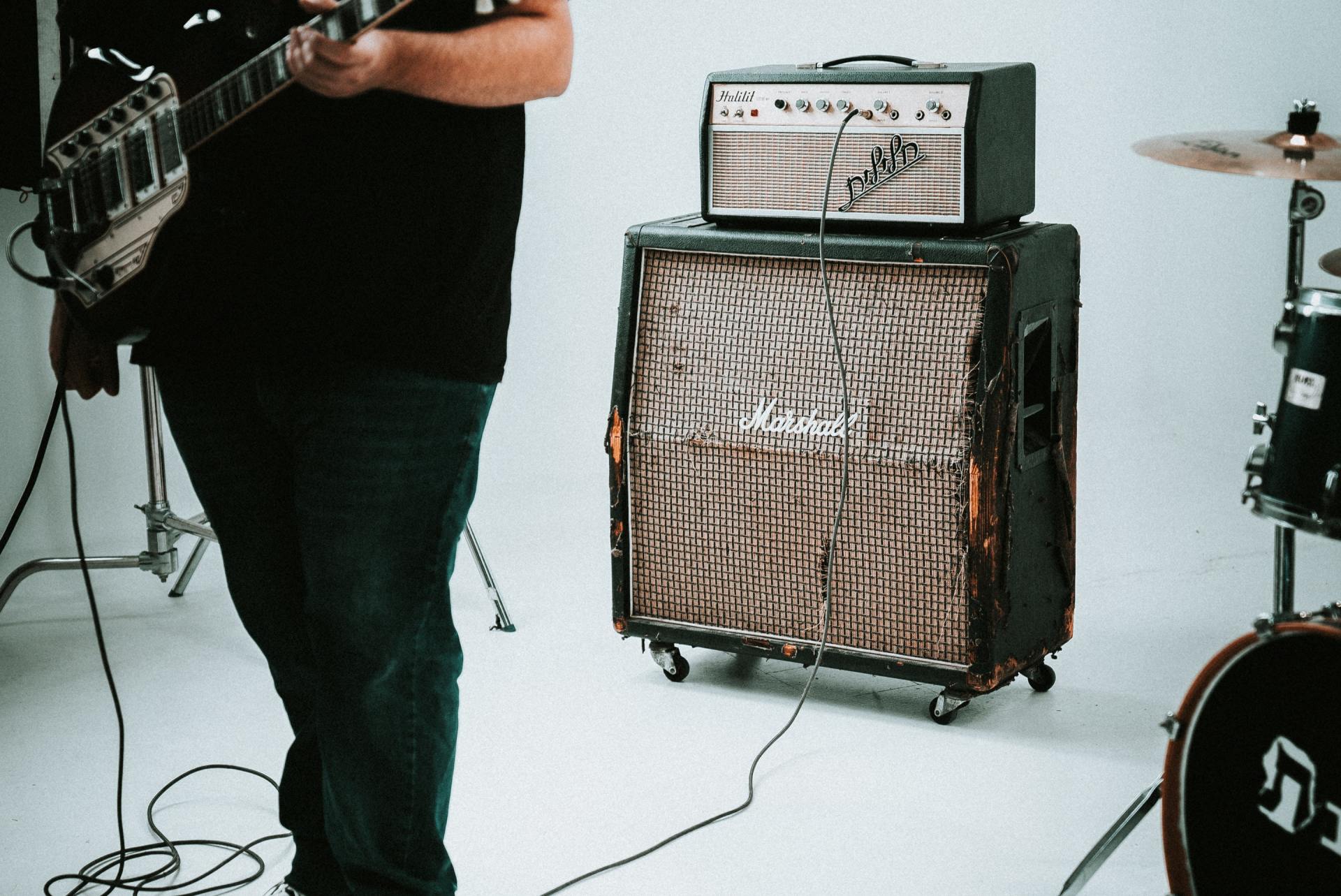Music Theory Crash Course: 4 - Chords
Chords
So far, we have been dealing with single notes and relations between them. Now we are going to move into specific mixed pitches. Chords are a group of notes that are usually played at the same time, or sometimes played in a sequence known as an arpeggio. Our basic chords are triads, we will start with those before moving into extended and more complicated ones.
Chords and scales are tightly knit together. One can derived from the other. A chord can belong in the same "tonal environment" of many scales (notes on the chord are in this scale) and a scale can have a different chord built on top of each and every one of its notes.
Major Triad
Again, we are going to use the C diatonic or major scale, as that is the easiest to use without any sharps or flats. Remember it is :
C D E F G A B C
What are the two most important notes there? The tonic and the dominant of C and G, play those notes together. It has consonance, but it could use something more. In the interval lesson we learned the major and minor notes are what add substance to a chord. So, let’s add the 3rd or E. Now play C-E-G, it sounds better, right?
This is the C major chord or triad; we use the word triad because we are stacking every third note. The major chord formula is 1-3-5 and will work the same for all 12 keys. Look at your Circle of Fifths and find the F major scale, the 1-3-5 or major triad will be F-A-C.
Before we learn our minor triad, we need to mention inversion, which is where you play the same notes, but in a different order. The root position is C-E-G, the first inversion is E-G-C, and the second inversion is G-C-E. They all are essentially the same chord but provide a little different sound with other notes than the root in the bass.
Later when you play songs and chord progressions you will find inversions are useful in voice leading and to keep movement to a minimum. If a player can move faster to a 2nd inversion of C major, and it sounds ok, this allows them to save time. Of course, it must sound good, or it may not work.
Since we based the chord from the root of a major diatonic scale ( C chord in the C major scale), the third will be major by definition because we pick the notes of the chord in the scale we base the chord on :
C D E F G A B C
Minor Triad
The minor triad is very easy to make once we know the major, the formula is
1-b3-5, which means C minor will be C-Eb-G. Play that and your C major back and forth and see what a difference it makes when your third degree is major or minor. As we build bigger chords, these same qualities will work on the 2, 3, 6, and 7.
Here, instead of starting from a scale, we started from the "color" of the chord we want. This is what lead the quality (minor or major) of the third in the chord.
Why not talking about the fifth ?
Because the chord we want does not specify it! Remember, a fifth can be perfect, diminished or augmented. We don't say a major fifth, it simply does not exist. Since the triads we looked at are minor or major, we take for granted that the fifth is perfect. Keep reading, you'll see what I mean ;)
Diminished Triad
Remember when we change the 5th, we aren’t making it a major or minor, instead we are diminishing or augmenting it. The formula for a diminished triad is 1-b3-b5 meaning a C¶ will be C-Eb-Gb. After you play that chord, you will see it is very dissonant and just begging to be resolved.
Augmented Triad
If we want an augmented triad, we use 1-3-5#, so a Cç is C-E-G# and it also has a very dissonant sound. Your diminished and augmented triads will be used sparingly and will need to be resolved. A great example of an aug chord is the Eç at the start of “Oh, Darling.”
Our triads will work by the same rules as the notes and intervals. For example, the chords built around the I (tonic), IV (subdominant), V (dominant) are where the primary harmonies will often exist. Remember they sound good to our ears. In fact, next when we learn chord progressions, we will see the I-IV-V is the foundation of thousands of songs.
And of course, the other scale degrees like the submediant, mediant, supertonic, and leading tone will be used in a supportive manner to create tension that will lead back into one of the primary triad degrees.
7th Chords
Many of our chords from here on out will be built on these triads. And in some cases, we will build extended chords by stacking another third on top! By adding the 7th degree to our triads, we can get a variety of 7th chords.
These are essential in jazz and rock, especially dominant and minor sevenths. Here is one of the more famous stories on 7th chords, we were all beginners once! You will not have to trek anywhere to find these chords if you use the formula.
Major 7th
The Cmaj7 is composed of C-E-G-B and is made by stacking a major third on the root and the fifth. One of the most famous song examples is “Autumn Leaves,” along with many other jazz songs. The pop song “Jumper” also begins on a Fmaj7.
Minor 7th
The minor 7th uses a b3 and b7 to create the formula 1-b3-5-b7 or C-Eb-G-Bb. The min7 is also essential in jazz as it is common in the ii7-V-I turnaround. The entire chorus of “Funkytown” is a Cm7 chord, you will see the m7 often in groovy R&B type genres.
Dominant 7th
Technically this chord is called the major minor seventh chord, because it has a major 3rd and a minor 7th for the formula 1-3-5-b7. But the common name is the dominant 7th, and you will see this chord everywhere. We call it the dominant because it is most often used as a V7 as that provides a stronger resolution than just V.
Note on chord symbols convention
Cm7 C7 Cmaj7
Which has minor 3rd and/or minor 7th ?
By convention we only specify it when the 3rd is minor, and the 7th is major.
This means we take for granted that a 3rd is major by default and a 7th is minor by default.
(We're talking about determining notes from the chord symbols here, not about chord construction in general)
So knowing that, this means:
- Cm7 specifies something is minor -> we get a b3 (minor 3rd) from the name and a b7 (minor 7th) by default
- C7 doesn't specify anything -> we get a major 3rd by default and a minor 7th by default
- Cmaj7 specifies something is major -> we get a major 3rd by default and a major 7th from the name
The proceeding 7th chords are not as common but still you will come across them. The reason we are showing you some is to take the fear away of complicated chords. Most of the time you just must read the name and build off the appropriate triad or base.
Diminished 7th
This formula can look scary at first! We are using a diminished triad and adding diminished minor 7th, so we get a double bb. All that means is to move a whole tone back. With a formula 1-b3-b5-bb7 that gives us C-Eb-Gb-Bbb (or A). This chord sounds like it belongs in a cartoon or soundtrack for an exciting moment!
Half-Diminished 7th (or minor 7th flat 5)
The half-diminished has the same formula, but without the double bb, 1-b3-b5-b7 so C-Eb-Gb-Bb. If you play both the Cdim7 and C half-dim7 one after the other, it has a very foreboding sound.
Minor Major 7th
A minor major 7th tells us the third will be minor and the 7th will not be flattened. We get a formula of 1-b3-5-7 or C-Eb-G-B, which is a very dissonant chord!
Now the previous 7th chords were all built on thirds, like stacked triads, but we can also have 7th chords that aren’t built this way.
Augmented 7th
A Caug7 is just an aug triad with just the b7 added. It has the formula 1-3-#5-7 which would give us C-E-G#-Bb and is another dissonant chord that you will not see much except in places like the whole tone scale.
Diminished Major 7th
This one will be easy by just adding a regular 7th to a diminished triad, giving us 1-b3-b5-7 or C-Eb-Gb-Bb. The dimM7 is not terribly dissonant and a nice jazzy way to turnaround on.
Dominant 7th Flat 5
This has a formula of 1-3-b5-b7, or C-E-Gb-Bb and this very odd chord is most at home in altered, whole tone, and even Locrian scales.
It's almost all in the name!
6th Chords
Major 6th
Before even seeing the formula, you should have an idea of what a 6th chord will be, it is simply a triad with a 6th degree added or 1-3-5-6. It can often be used as a slightly less stable replacement for the I chord.
6th chords are famous for how The Beatles ended their songs (here a G6). And they are a staple of boogie woogie walking bass lines. Also, a ukulele and lap steel are often tuned to C6 to give it that strong but still laid-back vibe.
Minor 6th
If we take a minor triad and the 6th, 1-b3-5-6 will give us C-Eb-G-A. This chord is not as common as the major 6th, but is used in jazz and soul on occasion.
9th Chords
9th chords follow a similar pattern as the 7th, just with the added 9th degree. The same goes for 11 and 13th chords, these seem complicated. However, if you just find the major scale and apply the chord formula it is not that hard, just take it slow!
One notable chord with the 9th degree is the Hendrix chord (The Beatles called it the Gretty chord) which is a dominant 7#9. Hendrix was very fond of the E7#9, which starts this song.
Sus Chords
A sus chord isn’t built on a triad, and it drops the 3rd (sus stands for suspended). A sus2 has the formula 1-2-5 and a sus4 is 1-4-5. Like augmented and diminished chords, they are usually used in small amounts and in between more consonant chords.
One of the best examples of both sus2 and sus4 chords is “Free Fallin” in the beginning riff. Or often songs like to end on a sus4-sus2-maj finale. Suspended chords really love to move back to the 3rd, that is usually their home resolution.
Power Chords
Power chords are not exactly chords as they only consist of the 1 and 5, but you will see them a lot in modern music. It may seem like they can’t have musical variety without any major or minor changes, but that’s not the case. All the overtones of distortion and signal changes add to the final sound. Some 90’s grunge and pop hits are all power chords! It’s an easy way to play guitar mainly using three bass strings and the root and octaves!
Slash Chords
Many musicians are confused when they come across a chord like C/B or G/F, but these are simple slash or compound chords. Think of the inversions above where we put a different note of the chord in bass instead of the root, the note after the slash is the new bass note. So, a 2nd inversion of C would be C/G, or a C/B would be a regular C chord with only a B added to the bass.
It really is that simple, the final note will start the chord. It is used often for descending bass lines in a song. That way we move chords and the bass walks along with it. A great example (which was inspired by Bach) is the song “Whiter Shade of Pale.” Nearly every line has a descending bass and slash chord pattern.
As a beginner it is best to stay in the diatonic chords and progressions, but as you progress you will want to start learning altered chords with small chromatic changes, borrowed chords, and how to modulate them. We don’t wish to give the impression that chords and their naming are all within these parameters, but those above will more than cover you for most songs.
And be prepared for some chords to have “different” names. There are only so many combinations of 12 notes. The chords C6 (C E G A) and Am7 (A C E G) have the same notes and as your chords grow, they can have many other names. Generally, you start from the bass and go up in naming, but it can depend on the song. If you join a serious music theory social media group, you will see many such arguments.
The best way to learn new chords is to play as many songs as you possibly can. Any tune you can think of, look it up and try it out. Granted tabs and chords online are not always correct (copyright issues!) but it is good practice to fix the bad ones. You don’t have to necessarily learn every song, just try them all to discover new chords.
If you want to study chords a little further, it is important to look at what scale degrees the extended chords are built on. This will help in your own songwriting and composition if you choose to do that. For now, just knowing your basic triads and how to make a few extended 7th chords will allow you to play most songs.
And that leads us to putting chords together in specific sequences known as progressions. Like our notes and intervals there are not that many to memorize and work with. The key is to know the most important progressions and when to use them.
